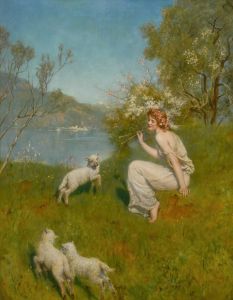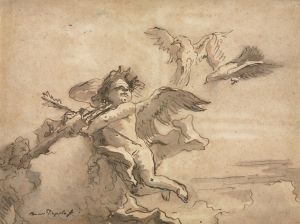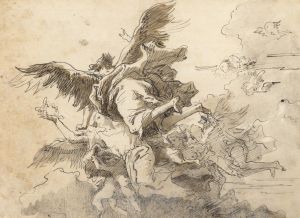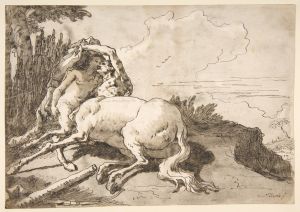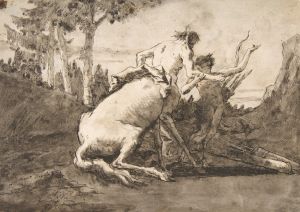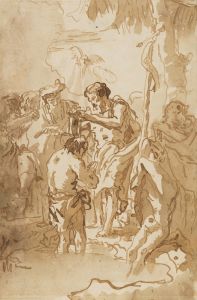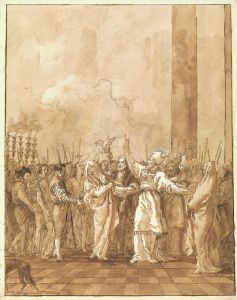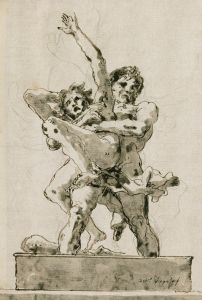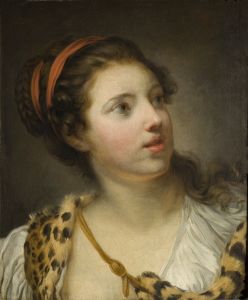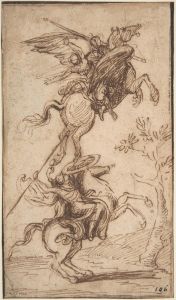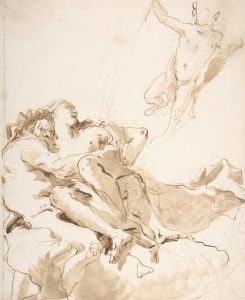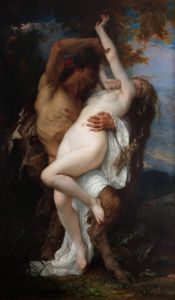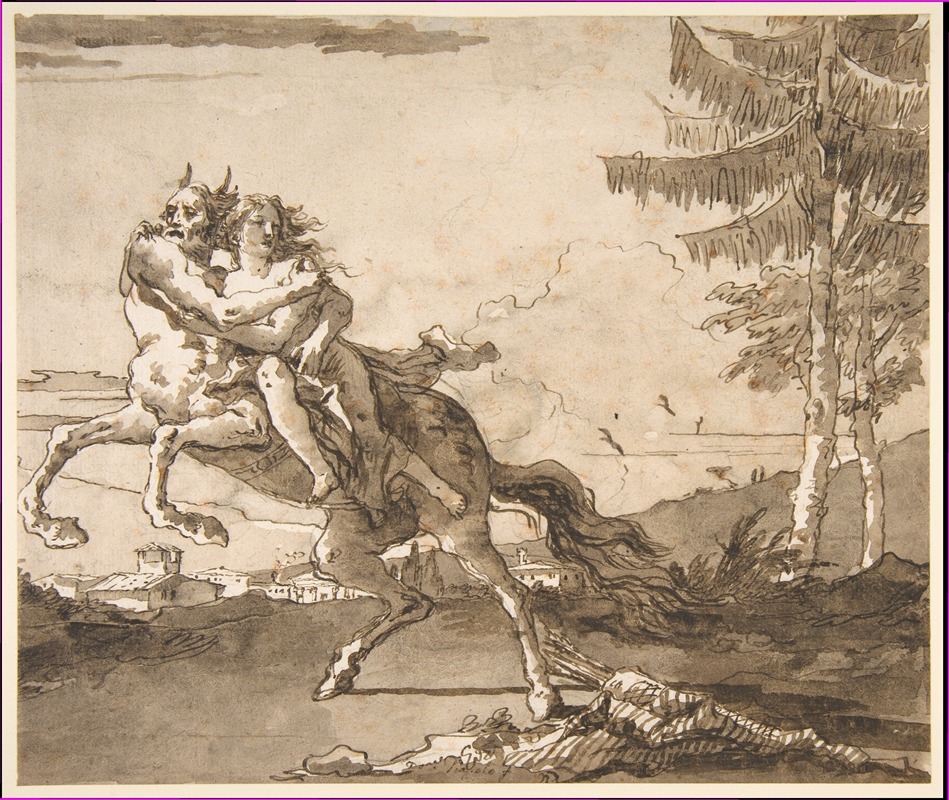
A Centaur Abducting a Nymph
A hand-painted replica of Giovanni Domenico Tiepolo’s masterpiece A Centaur Abducting a Nymph, meticulously crafted by professional artists to capture the true essence of the original. Each piece is created with museum-quality canvas and rare mineral pigments, carefully painted by experienced artists with delicate brushstrokes and rich, layered colors to perfectly recreate the texture of the original artwork. Unlike machine-printed reproductions, this hand-painted version brings the painting to life, infused with the artist’s emotions and skill in every stroke. Whether for personal collection or home decoration, it instantly elevates the artistic atmosphere of any space.
Giovanni Domenico Tiepolo, an Italian painter and printmaker, is known for his vibrant and dynamic compositions that often draw on mythological and historical themes. One of his notable works is "A Centaur Abducting a Nymph," a painting that exemplifies his skill in capturing movement and emotion through his brushwork and use of color.
Giovanni Domenico Tiepolo was born in Venice in 1727, the son of the renowned painter Giovanni Battista Tiepolo. He was trained in his father's workshop and quickly developed his own style, which, while influenced by his father's dramatic flair, also incorporated a more playful and light-hearted approach. Domenico's works often reflect a keen interest in the human condition, mythology, and the interplay between reality and fantasy.
"A Centaur Abducting a Nymph" is a vivid representation of a mythological scene, a subject matter that was popular among artists of the Baroque and Rococo periods. The painting depicts a centaur, a creature from Greek mythology that is half-human and half-horse, in the act of abducting a nymph, a minor female deity associated with nature. This theme of abduction is common in classical mythology and often symbolizes the tension between civilization and the untamed forces of nature.
In this painting, Tiepolo demonstrates his mastery of composition and movement. The centaur is portrayed in a dynamic pose, emphasizing the power and speed of the creature. The nymph, in contrast, is depicted with a sense of grace and vulnerability, her flowing garments and outstretched arms conveying a sense of motion and resistance. The interaction between the two figures creates a dramatic tension that is heightened by Tiepolo's use of light and shadow.
The color palette of "A Centaur Abducting a Nymph" is typical of Tiepolo's work, featuring soft pastels and warm earth tones that lend the scene a dreamlike quality. The background is often rendered in a way that suggests an idyllic landscape, enhancing the mythological theme and providing a contrast to the intense action in the foreground.
Tiepolo's ability to convey emotion and narrative through his art is evident in this painting. The expressions of the centaur and the nymph, along with their body language, tell a story that goes beyond the mere depiction of a mythological event. This ability to infuse his works with a sense of drama and storytelling is one of the reasons Tiepolo remains a celebrated figure in the history of art.
Throughout his career, Giovanni Domenico Tiepolo produced a wide range of works, including frescoes, religious paintings, and genre scenes. His contributions to the art world extend beyond his paintings, as he was also an accomplished printmaker, creating a series of etchings that further showcase his artistic talents.
"A Centaur Abducting a Nymph" is a testament to Tiepolo's skill and creativity, reflecting both his mastery of the medium and his ability to engage with complex themes. The painting remains an important example of 18th-century Italian art and continues to be studied and admired for its artistic and historical significance.





